
010-87162067
010-87162066
panchina@panchinasports.com
63-2 No.2 Jingyuan North Street, BDA Beijing, China
Publication Date:2021-02-07
The 2022 Beijing Olympic Winter Games and Paralympic Winter Games,
The countdown to the one-year anniversary.
Count 365 more days and nights, and spend a season of spring and autumn.
Guests and friends from all over the world will gather at the Beijing Winter Olympics!

Pan-China Sports, as a leading sports industry group company in China, is the builder of the "Double Olympics" venues. Stick to ice and water with the softest and strongest in the world. Completed the Beijing 2022 Winter Olympics curling project venue-Water Cube "Ice-water conversion" ice-making project and dehumidification system project, Beijing 2022 Winter Olympics ice hockey project main venue-National Indoor Stadium ice-making system project, Beijing 2022 Winter Olympics Avenue speed skating project venue-National Speed Skating Oval CO2 transcritical direct cooling ice-making system project on schedule.


▲ Construction site of Pan-China Sports Construction Team
Struggling day and night,
Pan-China Sports cooperate sincerely with Chinese and foreign teams.
Overcome a number of technical problems,
It has created many "China's first", "China's speed" and "Winter Olympics initiative".
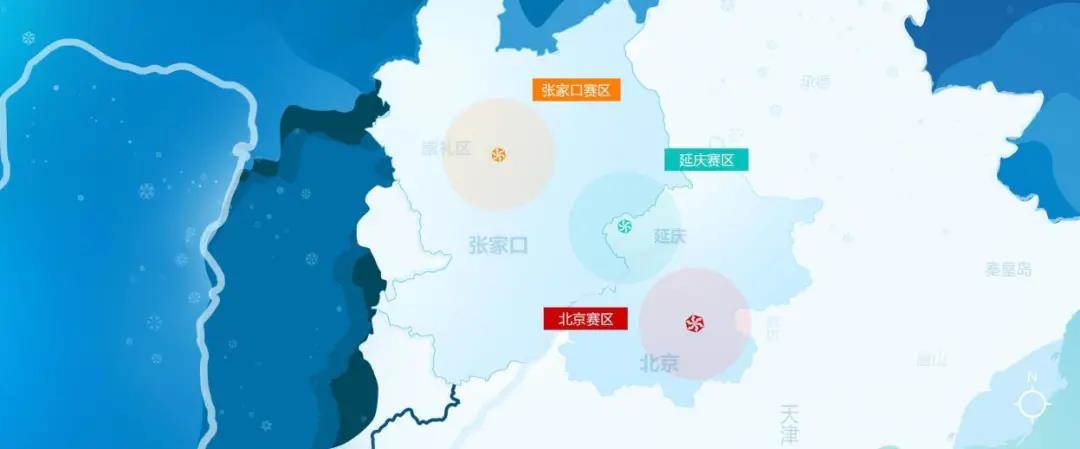
▲ Layout of three competition areas in the Winter Olympics: Beijing Zone, Yanqing Zone and Zhangjiakou Zone
On January 21th, 2021, the Beijing Olympic Winter Games of competition venues were fully completed, and other preparatory work also entered a critical moment of sprint.
In the upcoming Beijing Olympic Winter Games, there are 7 major events, 15 sub-events and 109 minor events, and 25 venues are planned to be used, which are distributed in three competition areas, namely, Beijing Zone, Yanqing Zone and Zhangjiakou Zone. Among them, Beijing will host all the ice events, and Yanqing and Zhangjiakou will host all the snow events.
25 venues in three major competition areas
Beijing Olympic Winter Games plans to use 25 venues, including 12 competition venues and 13 non-competition venues, including 3 training venues, 3 Olympic villages, 3 award plazas, 3 media centers and 1 opening and closing venue. Of all the venues, 10 are existing, 6 are planned, 4 are for the Winter Olympics, and 5 are temporary. All the new venues will meet the LEED standard for international green building evaluation and certification.
Beijing Zone
According to the plan, the Beijing Zone will undertake all the ice events in the Winter Olympics, and a total of 13 competition and non-competition venues will be used, including 8 existing venues, 4 new venues and 1 temporary venue. Beijing Zone, there will be three major events (curling, ice hockey, skating), five sub-events (curling, ice hockey, short track speed skating, figure skating, speed skating) and 32 minor events.
Beijing Olympic Park, an important legacy of the 2008 Olympic Games, will once again become the core area of Winter Olympics in 2022. Winter Olympics has seven venues located in Beijing Olympic Park.
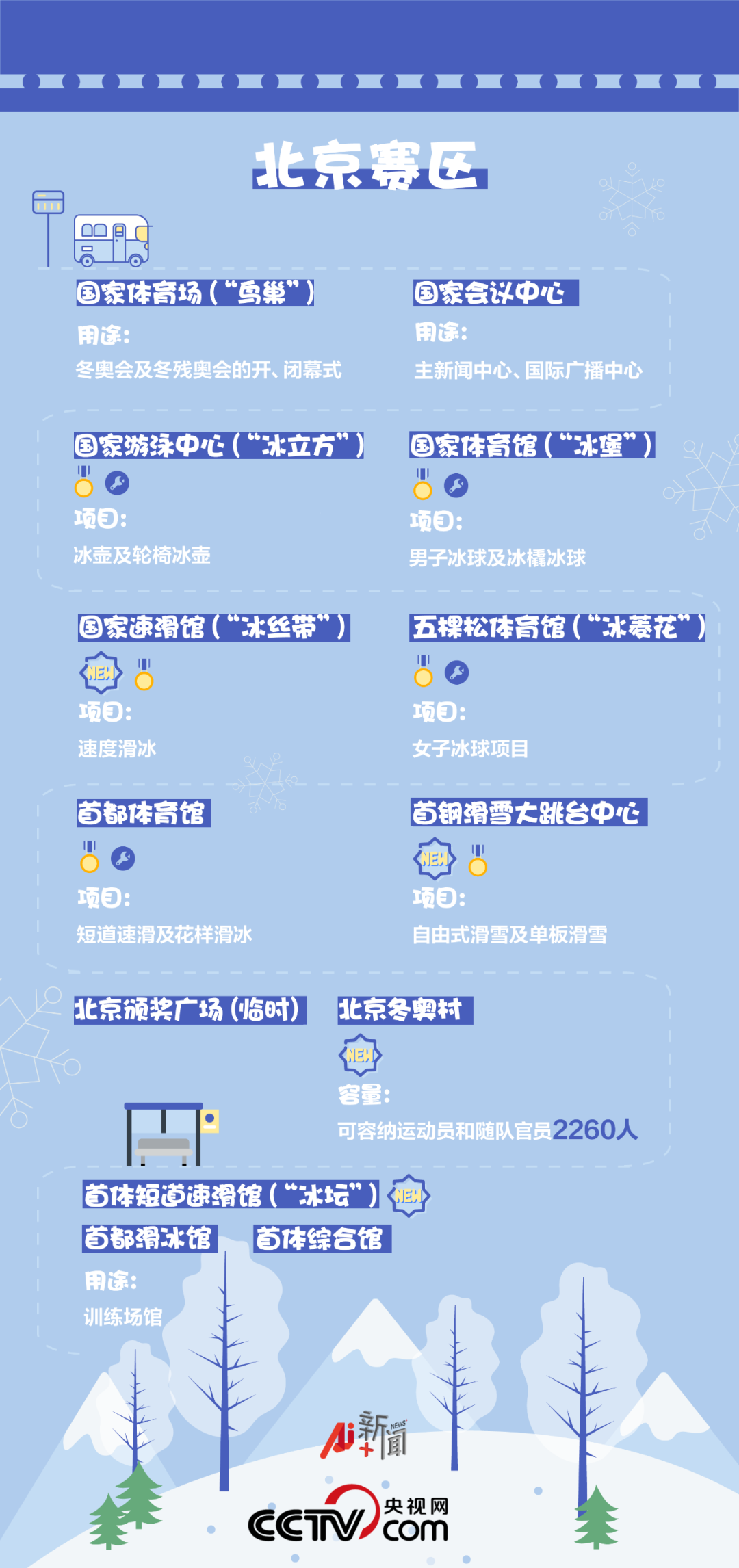
There are six competition venues in the Beijing Zone, of which four are existing venues and two are newly built venues. Water Cube, National Indoor Stadium, Wukesong Stadium and Capital Indoor Stadium will hold curling, ice hockey, short track speed skating and figure skating competitions respectively.
The newly built National Speed Skating Oval is the landmark venue in the main competition area of Beijing, and it is also the only newly built ice competition venue, which is vividly called "Ice Ribbon". The National Speed Skating Oval uses the temporary venues for hockey and archery for the 2008 Olympic Games for construction, and has the largest full ice surface design in Asia, with an ice surface area of 12,000 square meters.
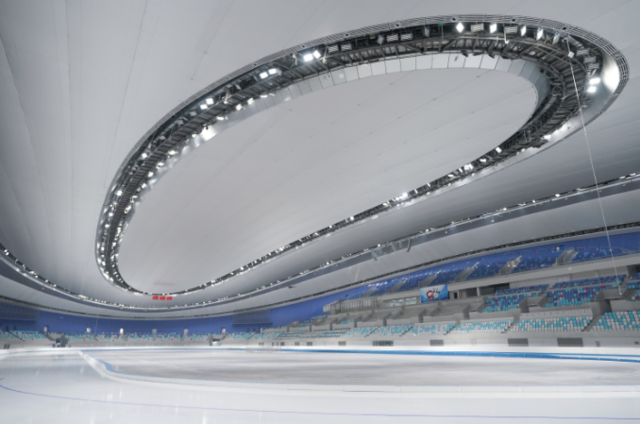
▲ National Speed Skating Oval "Ice Ribbon"
On January 22th, 2021, the first ice making of the National Speed Skating Oval was successfully implemented, and the speed skating track was successfully made.After the end of the Winter Olympics, it will become a permanent training ground for Chinese athletes Winter Olympics ice events, and will also be open to Beijing residents to meet their winter sports needs.
In addition, the newly built Big Air Shougang is the only snow event venue in the central city of Beijing Olympic Winter Games, and it will undertake freestyle and snowboard jumping hill events during the competition. After the competition, it will become the world's first permanently reserved and used skiing jumping hill venue, and at the same time, it will be open to the public and become a sports theme park serving the public.
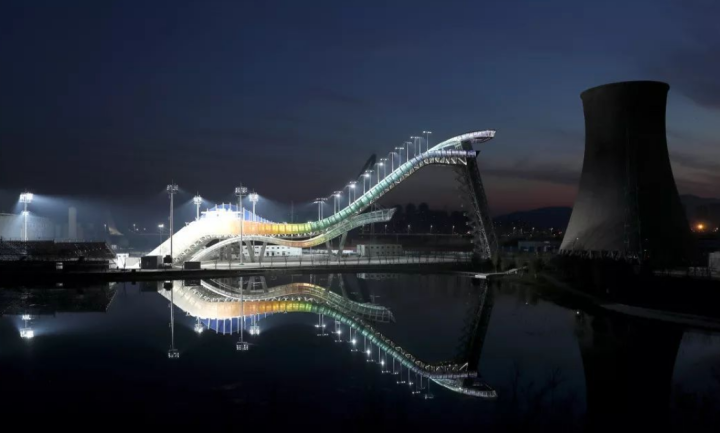
▲ Big Air Shougang in the night.
There are seven non-competition venues on the Beijing Zone, including the National Stadium (Bird's Nest), the National Convention Center, the newly built Beijing Olympic Village, the Beijing Medals Plaza, and three training venues, namely, the Capital Short Track Speed Skating Hall, the Capital Skating Hall, and the Capital Sports Complex Hall.
Yanqing Zone
The Yanqing Zone is located in Yanqing District, northwest of the central city of Beijing. There are five competition and non-competition venues, three of which are new and two are temporary venues. There will be three sports (Alpine Skiing, Bobsleigh and Tobogganing), four disciplines (Alpine Skiing, Bobsleigh and Tobogganing, skeleton and Luge) and 20 events.

There are two competition venues in the Yanqing Zone, both of which are newly built. The Yanqing National Alpine Skiing Centre relies on the natural mountain shape of Xiaohaituo Mountain, with a total length of 21 kilometers and a drop of about 800 meters. It is the highest level alpine skiing track in China and the only track that meets the Winter Olympics standards in China. It will be used to hold alpine skiing events.
The Yanqing National Sliding Centre track is 1.9 kilometers long, with a vertical drop of 127 meters and 16 bends. It is one of the new competition venues with the most difficult design, the most difficult construction and the most complex construction technology in the Winter Olympics. During the Winter Olympics, it will undertake all the competition contents of the three events of bobsleigh, skeleton and sled.
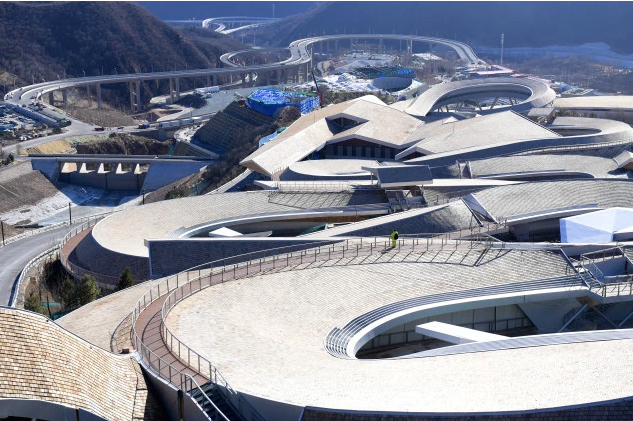
▲ Yanqing National Sliding Centre.
There are three non-competition venues on the Yanqing Zone, including the newly built Yanqing Olympic Village and the temporary Yanqing Mountain Media Centre and Yanqing Award Plaza.
According to Liu Yumin, Minister of Venue Planning and Construction Department of Beijing Organizing Committee for the 2022 Olympic Winter Games, instroduced that the three venues of Yanqing National Alpine Skiing Centre, Yanqing National Sliding Centre and Yanqing Winter Olympic Village in Yanqing Zone are all newly built venues, which will be permanently retained after the Games. Among them, the Yanqing National Alpine Skiing Centre will be used for the training of China's national team and professional teams at home and abroad and the holding of international competitions; after the Yanqing National Sliding Centre, additional mass experience entrances will be set up to carry out mass experience projects; The Yanqing Olympic Village will be transformed into a hot spring resort hotel.
"In the Yanqing Zone, a number of mass ski trails will be built, mountain sports leisure parks and outdoor sports experience bases will be built, so that the whole competition area will become both a major event venue and a mass ski center." Liu Yumin said.
Zhangjiakou Zone
There are four competition venues in Zhangjiakou Zone, three new venues, namely, Zhangjiakou National Ski Jumping Centre, Zhangjiakou National Cross-Country Skiing Centre and Zhangjiakou National Biathlon Centre, have been built, and Miyuan Yunding Paradise has been rebuilt and expanded into a Zhangjiakou Genting Snow Park.
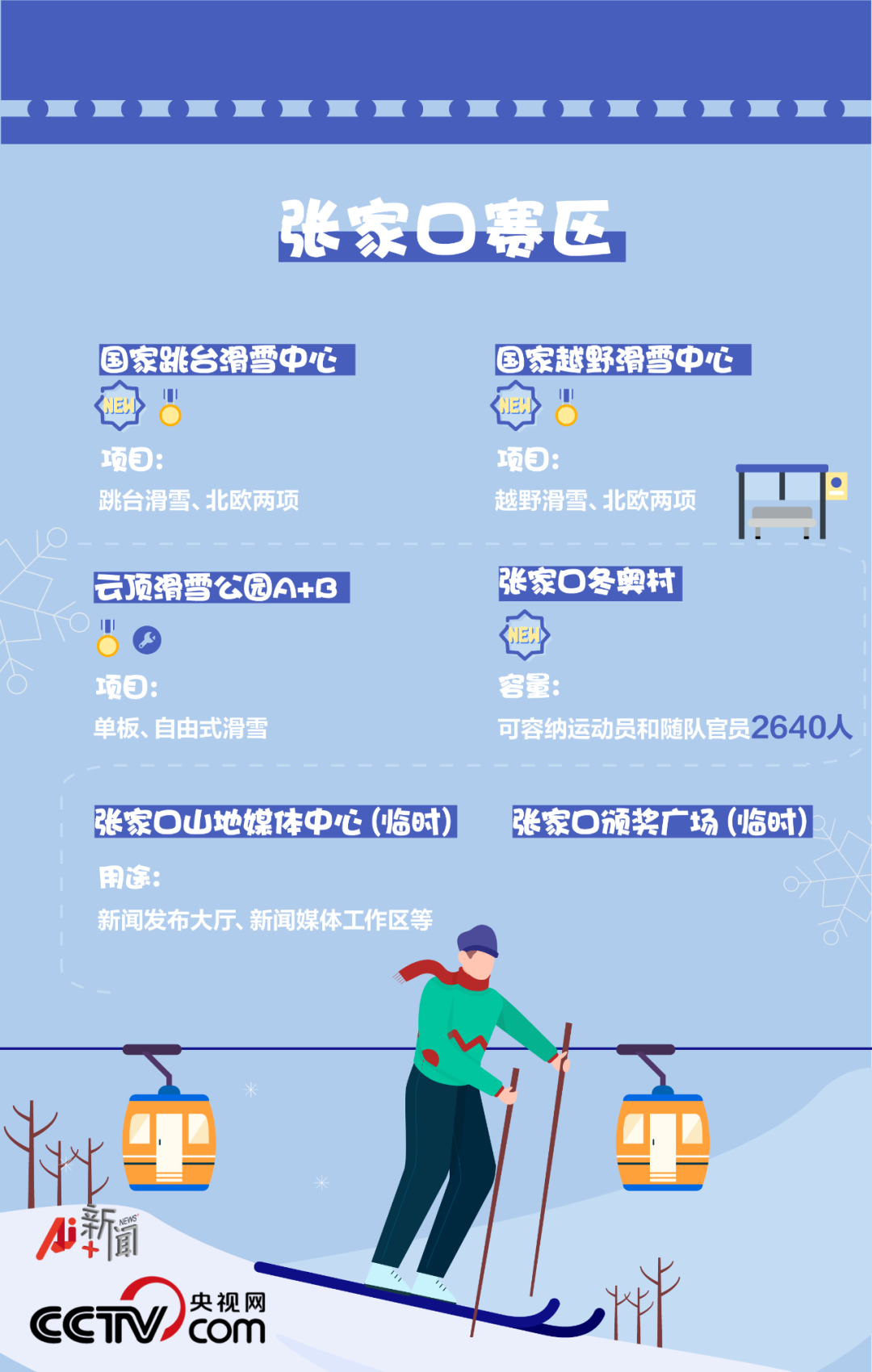
The Zhangjiakou National Ski Jumping Centre is the first jumping hill skiing venue in China that meets international standards, and it is also the competition venue with the largest amount of work and the highest technical difficulty in Zhangjiakou host area, and it will undertake Winter Olympics jumping hill skiing and Nordic Combined competitions. The jumping hill profile is called "Snow Ruyi" because it is consistent with the S-shaped curve of the traditional Chinese mascot "Ruyi". The Zhangjiakou National Ski Jumping Centre consists of the summit club at the top of the mountain and the stand area and two tracks at the foot of the mountain. The two tracks consist of the big jumping hill track with a drop of 136.2 meters and the standard jumping hill track with a drop of 114.7 meters.
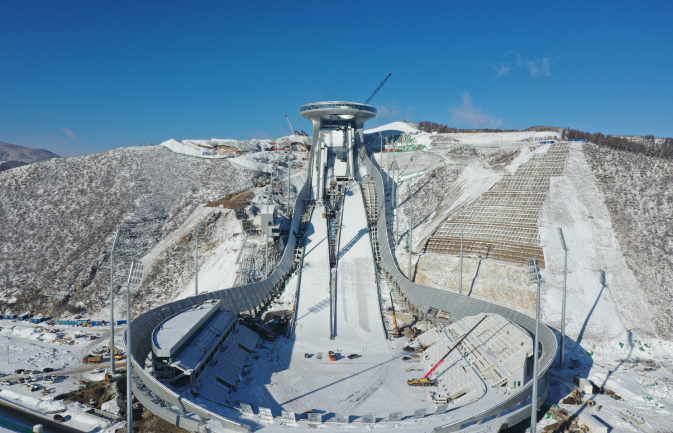
▲ Zhangjiakou National Ski Jumping Centre.
The Zhangjiakou National Cross-Country Skiing Centre will undertake the Cross-Country Skiing and Nordic Combined of the Winter Olympics, the Zhangjiakou National Biathlon Centre will undertake the Winter Olympic Games and the Winter Paralympic Games, and the Genting Ski Park will undertake the snowboarding and freestyle skiing events of the Winter Olympic Games.
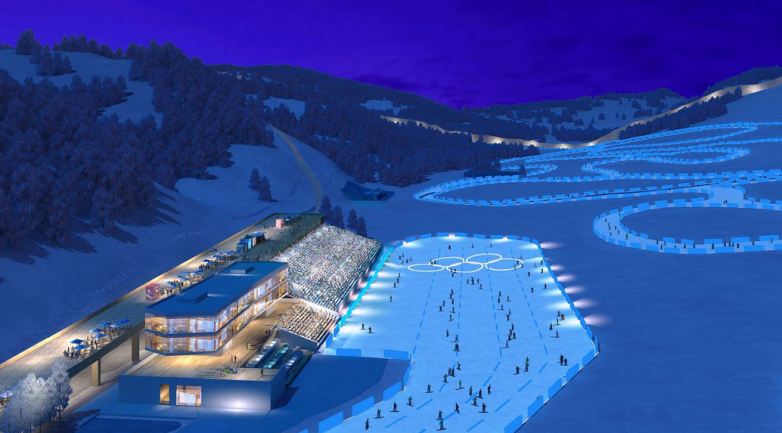
▲ Zhangjiakou National Cross-Country Skiing Centre.
There are three non-competition venues on the Zhangjiakou Zone, namely, the newly built Zhangjiakou Olympic Village and the temporarily built Zhangjiakou Mountain Media Centre and Zhangjiakou Medals Plaza.
Li Li, deputy director of the Zhangjiakou Operating Center of the Beijing Organizing Committee for the 2022 Olympic Winter Games, said that after the Winter Olympics, the "Three fields and one village" of the Zhangjiakou Zone (Zhangjiakou National Ski Jumping Centre, Zhangjiakou National Cross-Country Skiing Centre, National Winter Biathlon Center and Zhangjiakou Winter Olympic Village) will be permanently preserved as the Olympic heritage and become the Olympic Park. At the same time, Zhangjiakou plans to build the core area of the event into a world-class tourist destination relying on Olympic resources.
"Black Technology" Helps Build Green Winter Olympics
In the process of venue construction in the three major competition areas of the Winter Olympics, low-carbon environmental protection has become the main direction of development, and green has become the background of the construction of the Beijing Winter Olympics.
"Ice Ribbon" achieves the most environmentally friendly and lowest carbon ice surface. The National Speed Skating Oval "Ice Ribbon" is the first Winter Olympics speed skating venue in the world to adopt carbon dioxide transcritical direct cooling ice-making technology, which is the most advanced and environmentally friendly ice-making technology in the world at present, and the carbon emission value is close to zero, and the ice-making energy efficiency is greatly improved. It is understood that after the game, the ice surface can be cooled in different areas, and the temperature of each piece of ice can be controlled separately, so as to realize the "Simultaneous operation and different use" of the venue. Two key design schemes, the integrated design of the ice making system of the venue and the structural design of the ice board, have been patented.
Two-way conversion of winter and summer events into the standard of venues. Beijing Zone, the Beijing Olympic Winter Games makes extensive use of the 2008 Beijing Olympic venues to realize the two-way conversion of winter and summer events into the standard configuration of Beijing Zone venues. The National Aquatics Centre "Water Cube" is the venue for the swimming, diving and synchronized swimming events of the 2008 Olympic Games, and during the Beijing Olympic Winter Games in 2022, the "Water Cube" will be transformed into the "Ice Cube" to undertake the curling and wheelchair curling competitions.
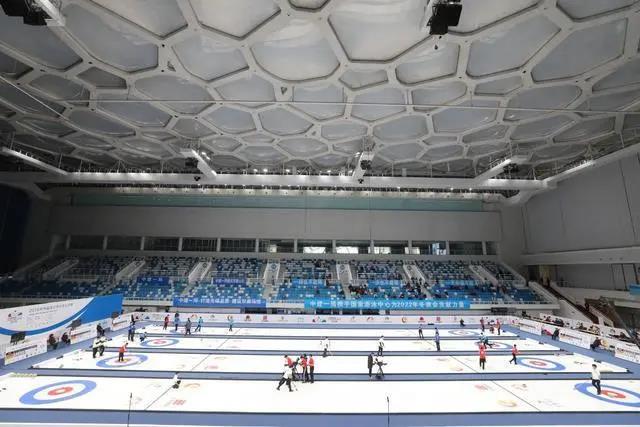
"Water Cube" is transformed into "Ice Cube". In order to achieve the "Ice-water conversion", it is necessary to set up a curling track on the swimming pool, and add the ice function on the basis of maintaining the water function, that is, to build a convertible structure and install a removable ice-making system in the middle of the competition hall, and cooperate with the upgraded air conditioning and dehumidification system, which is the first time in the history of Winter Olympics.
Venues use 100% clean energy. As early as July 1, 2019, the first batch of seven Beijing Olympic Winter Games venues and supporting service facilities, such as the National Stadium (Bird's Nest) and the National Aquatics Centre (Water Cube), have officially used green electricity. Huang Hui, Director of Urban Venue Construction Department of Beijing Major Projects Office, said that with the world's first 500,000-volt Zhangbei flexible DC transmission and transformation project put into operation in June last year, green and clean electricity such as wind power and photovoltaic power from Zhangjiakou officially entered Beijing, and all venues will use 100% green electricity by 2022. In addition, the venues and facilities of the Beijing Olympic Winter Games will be used for a long time and sustainably after the Games, to achieve a win-win situation in terms of benefiting the people, sports, urban and regional development, and to build the Olympic sports industry chain.
Some of the pictures in the article are from CCTV.